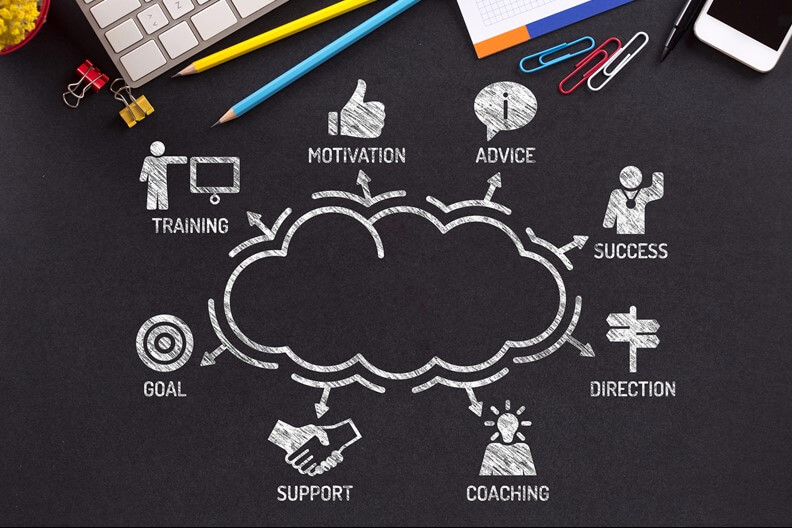It’s hard to dispute the value of mentorship in the workplace. Numerous statistics reinforce it, with these compelling statistics standing out among them:
- Over four-fifths (84%) of Fortune 500 companies in the U.S. have implemented mentoring programs.
- An impressive 90% of Fortune 250 companies in the U.S. are leveraging mentoring to foster talent development.
- A remarkable 96% of the top Fortune 100 companies in the U.S. utilize mentoring programs to enhance employee growth.
- Every single one of the Fortune 50 companies (100%) in the U.S. has adopted mentoring programs, showcasing their commitment to nurturing leadership.
Source: (1)
Mentoring is a practice that has been occurring between peers and leaders for many years, but the face of professional mentorship is changing. Where it was once formal in nature, appointed by the employer and structured to align with the company’s overarching goals, there is very little resemblance between traditional and emerging, modern mentorship models.
A growing number of organizations are beginning to realize that informal mentorship offers benefits its formal predecessor cannot. The informal model relies on organic connections between colleagues, rather than an assigned mentor and mentee partnership. It is built on a foundation of common interests, professionally speaking, and usually sought out by the mentee. These aspects of an informal mentorship also make it more flexible, dynamic and adaptable than the formal model. As a result, these mentor and mentee relationships tend to feel more natural to both people.
It is important to stress that there are certain situations and types of business structures that lend themselves to formal mentorship. Some environments are better suited to the designated timelines and specific goals that characterize formal mentorships. Healthcare and financial services are two industries where formal mentorship programs work well. They have defined career paths, high-stakes environments, and progression tracks designed to help mentees in achieving milestone goals. For example, Goldman Sachs (financial services industry) enables junior employees to gain insights from seasoned professionals.
In industries where innovation, creativity, and individual expression are essential, many companies prefer a less structured environment where informal mentorship is more widely used. A few companies that highly value informal mentorship programs are:
- Google (technology industry): Known for having a highly innovative culture, Google values open communication and collaborative work environments. Informal mentorship allows employees to learn from each other naturally.
- Starbucks (retail industry): Desiring to create a culture of mentorship for all stakeholders, Starbucks employees are able to seek advice and guidance from each other just like customers can, which fosters a supportive work environment.
- Disney (media and entertainment industry): Disney employees often collaborate across departments which leads to organic opportunities for mentorship relationships that enhance innovation and creativity.
So, what makes informal mentorship an appealing option or an attractive addition to formal mentorship programs?
INDIVIDUALIZED COUNSELING SUITED TO EACH MENTEE
Although employers might come close to matching mentors and mentees according to the mentees’ needs and preferences, they can never achieve the level of specialized guidance that their informal counterparts get naturally. In the latter situation, mentees seek out mentors who they feel possess the experience and knowledge that can benefit them. Mentees are free to pursue a line of questions for which they feel they need answers, instead of getting a mentor foisted on them who may not be able to fulfill their very specific needs.
And, if one mentor is not the best choice for the mentee, there is no limit to the number of other potential mentors they can consider. Formal mentorship arrangements do not offer this option.
LONG TERM PROFESSIONAL DEVELOPMENT
Since formal mentoring partnerships typically have a strict end date, mentees are officially cut off from their mentor after that period is over. If you think about it, this is not an optimum method of learning.
Informal mentorship, on the other hand, lends itself beautifully to continuous, ongoing professional development. At any time in their tenure at the company, and even beyond, mentees have access to the well of knowledge provided by anyone in the company. As they progress in their career and encounter new challenges, mentees can reach out to their subject matter mentors for guidance and support.
SOURCE OF INSPIRATION
When a mentee picks a mentor themselves, it is likely because they find something about that person’s career trajectory, work style or other characteristics inspiring. They want to emulate their mentor; in this way, the mentor becomes a source of inspiration to their mentee.
Conversations between the two coworkers offer enormous potential to spark excitement within the mentee. The organic connection and “chemistry” are highly motivational and serve as a positive driving force for the mentee.
NO HIERARCHY LIMITATIONS
When a company dictates mentor and mentee partnerships, they almost always assign a mentor who holds a higher position to a mentee who sits lower in the hierarchy. Although this arrangement is fine for employees who want the guidance of a higher-ranking colleague, this is not a universal preference.
For example, you might have an employee who greatly admires and respects a peer whose ranking is equal to theirs. In cases like this, the person might simply want to learn how they can improve in their current role, versus looking forward to a possible promotion. This person might have a burning desire to find out why their peer has performed so well in their shared role and how they have achieved success in that role.
Alternatively, you may have an employee who is fascinated with something that is generally handled by another department. However, being part of a multi-departmental project allowed this employee an opportunity to become cross-trained and gain new skills that need a mentor or team of mentors to keep challenging their learning curve.
ANYONE CAN GET MENTORING AT ANY TIME
The structure of formal mentorships means that a limited number of partnerships can happen at the same time. Informal mentoring, on the other hand, is available to anyone at any time. In this way, it is more inclusive.
In addition, employees at companies that formalize mentorship must wait until their employer assigns the partnership before they can start reaping the benefits. This could take months. In the meantime, these employees are left without this pivotal guidance, which could adversely affect their performance at work.
IMPROVED SELF-CONFIDENCE
It is tremendously empowering for employees to choose their own mentors. And, when the partnership creates a successful outcome for the mentee, it gives them a feeling of confidence, because they made the choice themselves. They feel better about their decision-making skills and their ability to apply the guidance provided by their mentor.
MUTUALLY BENEFICIAL
Informal mentorships offer many advantages to mentees – and it does not end there. Mentors can also benefit from these partnerships, especially if both people have the same role, or two roles that are very similar. By encouraging your employees to pursue informal mentorships, chances are good that you will fire up their engagement and job satisfaction levels, helping your organization in the long run.
Looking for a polished meeting planner to set up your corporate meeting or event? Get in touch with Gavel International for more information.
This article was last updated on June 3, 2025
- Building a Culture of Informal Mentorship - June 2, 2025






